The world of antiques reveals a wide variety of items once considered to be priceless, including art, jewelry, furniture, and more. Many people consider these items to be treasured possessions that reflect their own personal history or that of their family.
Some collectors focus on collecting an item because it is rare or popular, but there are others who prefer to focus on items that have stood the test of time and proven themselves to be irresistible.
Antiques are a truly unique type of investment and if you’re looking to make some money, antiques are a great place to start. They hold their value over time and many have the potential to become even more valuable as time goes by. If you’re trying to collect antiques, then it’s important to know which ones will be worth a lot of money in the future, as well as how much they cost today.
In this article, we’ll take a look at the most expensive antiques in the world.
14. Harrington Commode
Country of Origin: London
Year Invented: 1770
Owner: Earls of Harrington
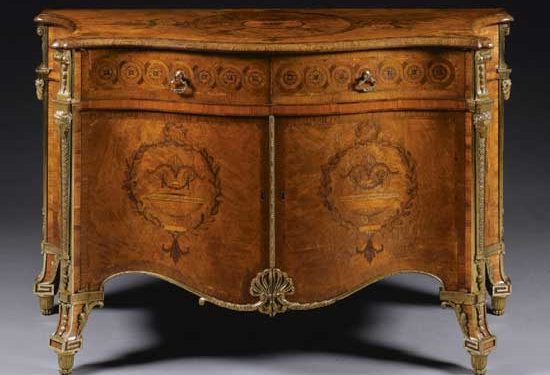
The Harrington Commode has a serpentine-shaped, tulipwood-banded top, fine woodworking, and rosewood that has been gilt-lacquered. Its dimension is 2 feet, 11 inches long, 4 feet, 7 inches wide, and 2 feet, 1.5 inches high. It was estimated to be sold at a low price but it was acquired five times than expected amount.
The Earls of Harrington’s estate is the owner, and it’s unclear how the object ended up in their possession. Its original acquisition is without origin or documentation. The toilet, however, is believed to have been purchased by Jane Fleming, the Countess of Harrington and wife of Charles Stanhope, the 3rd Earl of Harrington, or by her mother and her second husband.
It has been estimated that the commode dates to around 1770 and that Thomas Chippendale once owned it, giving it a great lot of legitimacy, provenance, and elegance.
Did You Know?
The fact that nobody knew with certainty who had initially bought the commode did not dissuade bidders from this masterpiece. As of this writing, the commode is by far the most costly piece of English furniture ever sold.
13. Diamond Panther Bracelet
Country of Origin: Paris
Year Invented: 1952
Owner: Wallis Simpson
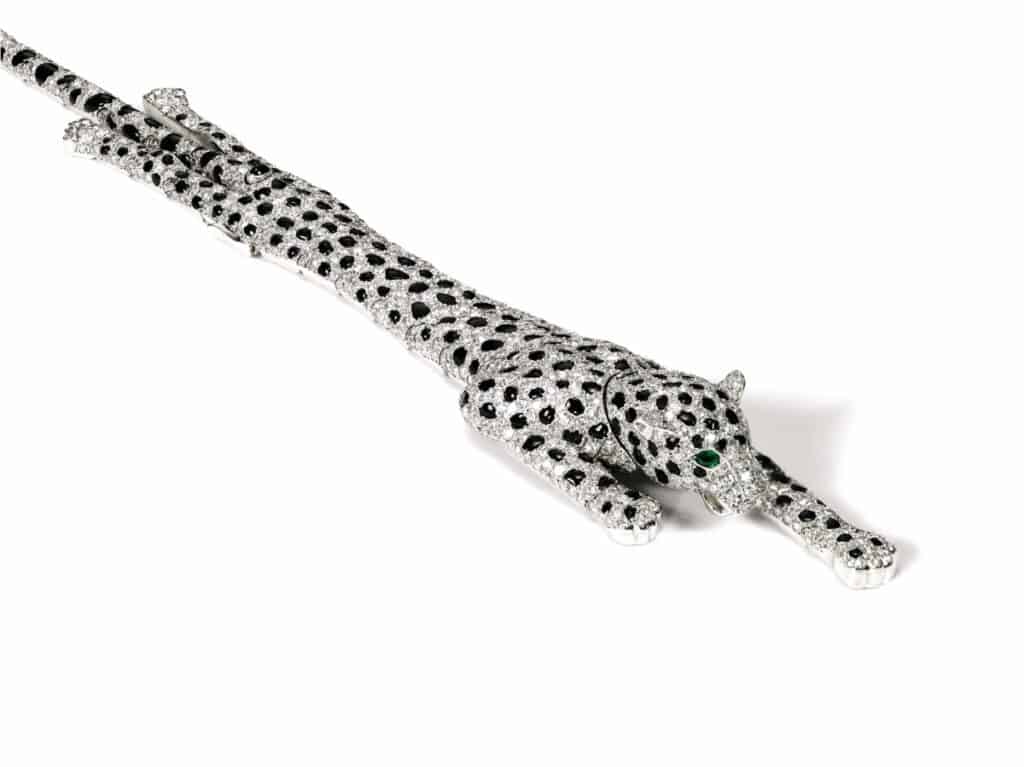
In 1952, the magnificent American socialite and Duchess of Windsor, Wallis Simpson, had this stunning Diamond Panther Bracelet. As the bracelet was missing a few tiny stones, it sold for $12.4 million, which was three times its estimated value, at a Sotheby’s auction in 2010.
Rumor has it that the successful purchaser of the object of interest was Madonna, who filmed a film about Simpson and her lover King Edward VII.
In 1952, Paris-based Cartier manufactured this bracelet. Diamonds and onyx with calibré cuts are pavé-set throughout the body’s delicately sculpted design. An emerald marquise-shaped is meticulously placed in each eye. Although it measures 195 mm, it seems to be 165 mm long when worn.
Did You Know?
Beyond the exquisite panther’s sensual contours and green eyes, this bracelet is notable for its broad articulation.
12. Goddard-Townsend Antique Secretary Desk
Country of Origin: United States
Year Invented: 1761
Owner: Anonymous bidder
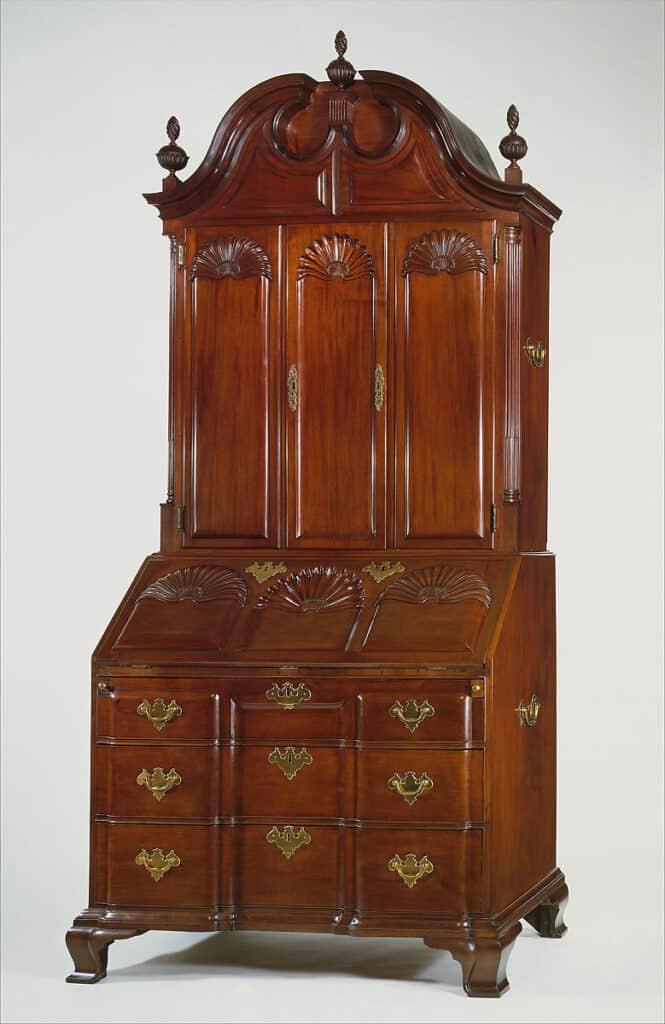
Goddard-Townsend Antique Secretary Desk, the tall bookcase with a majestic arched pediment is supported by the blocked, tripartite desk drawers and shell-carved fall front. Records for the home and company were kept in the compartments and drawers hidden behind the bookcase doors.
One of the most well-known pieces of American furniture is the Rhode Island Desk and Bookcase, which was made by the Newport, Rhode Island, furniture makers in the Townsend Goddard family.
There are nine known examples of this type of Block and Shell Carved Desk and Bookcase; all but all are in museums around the nation and except the one piece that was sold at Christie’s of New York in 1989 for a record-breaking $12.1 million dollars to an anonymous bidder.
Did You Know?
The American furniture makers utilized their finest materials where they might be appreciated since it was concluded that this item was designed to be leaned up against a wall.
11. White Porcelain Moonflask in Pink and Blue Enamel
Country of Origin: China
Year Invented: 1736
Owner: Anonymous bidder
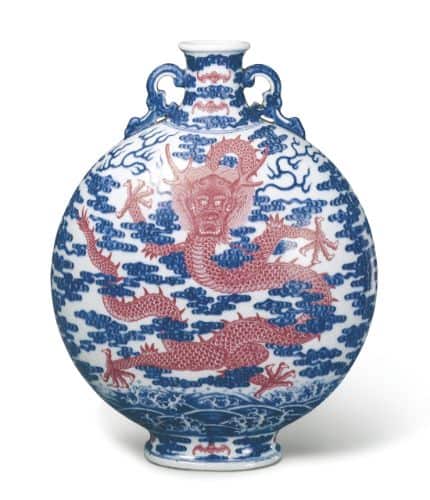
This exquisite White Porcelain Moonflask in Pink and Blue Enamel, which dates to the Qianlong Dynasty because it bears the Qianlong six-character mark, was made between 1736 and 1795 even though its shape is typical of the 19th-century style. It has two phoenix birds, a flaming pearl, and a wonderful blend of colors and porcelain, all expertly rendered in pink enamel.
The two moon flasks are thought to have first been a bundle because they are both pretty much identical and can be found in Tokyo’s Matsuoka Art Museum. The pink and blue moon flask with white porcelain was acquired by an anonymous bidder at a Christie’s auction in Hong Kong in 2010.
Did You Know?
The flask is an excellent example of several qualities typical of the finest items created for the Qianlong emperor, the first of which is overall splendor and the second of which is the use of archaism in its structure.
10. Olyphant Battle Horn
Country of Origin: England
Year Invented: 1620
Owner: Aga Khan Museum
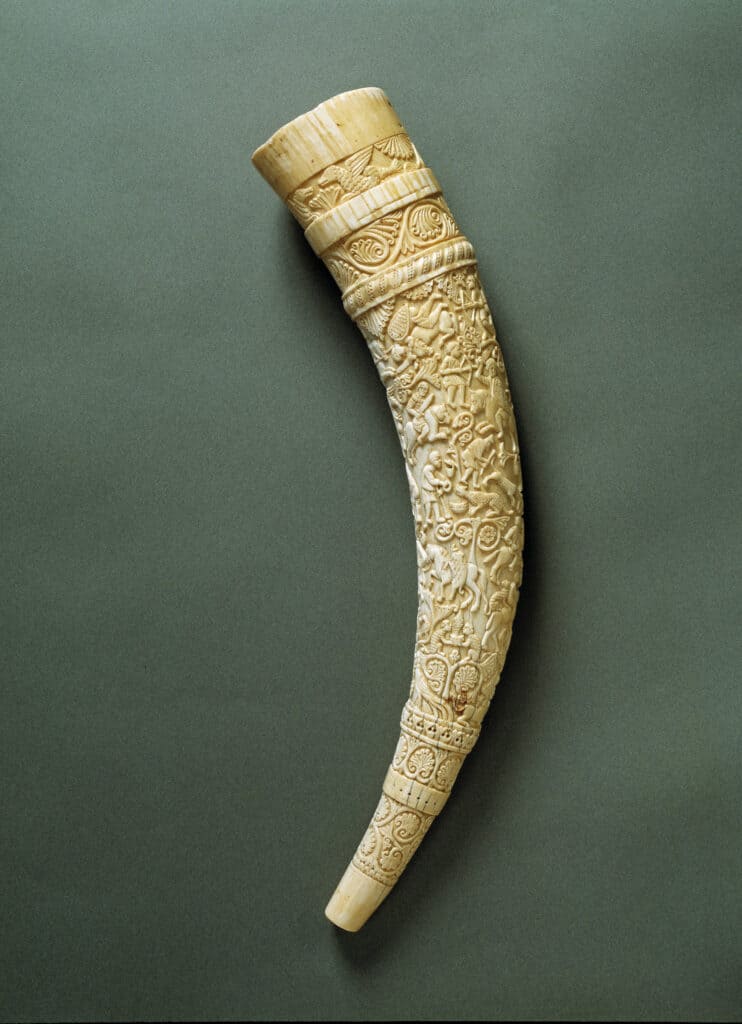
Tusks from elephants—certainly African elephants at this period and location—are used to create olyphants. The pattern of the Olyphant Battle Horn is made up of horizontal bands through which a succession of birds and animals fly, occasionally nibbling the tail of the creature in the front. A soldier fending against lions while dressed in what appears to be Norman armor is carved into the olyphant’s jaw.
This ivory horn is one of about 80 examples that still exist worldwide, known as “olyphants,” deriving from the Old French word for “elephant.” This utterance first appears in the Song of Roland, written in the 12th century, when Roland, who is battling the Arabs in Spain at the Battle of Roncevaux in the year 778 AD, blows his horn ferociously to invoke the memory of his benefactor Charlemagne.
Did You Know?
The images of humans and animals fighting send a sense of hostility and strength. Therefore, it seems sensible that the Norman nobles made extensive use of oliphants—and the larger category of ancient horns fashioned from cattle, bison, or aurochs—in hunting.
9. Patek Philippe Supercomplication Pocket Watch
Country of Origin: Switzerland
Year Invented: 1932
Owner: Anonymous bidder
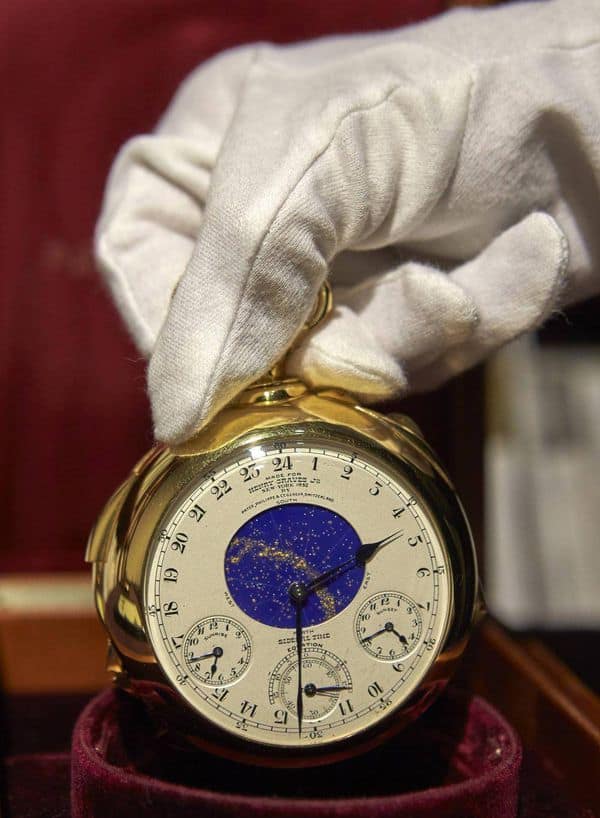
The Patek Philippe Henry Graves Supercomplication, known as the “Mona Lisa of watches,” is horological art at its finest and is widely regarded as the most complex timepiece ever created by human hands alone, without the use of computers. It was put up for auction on November 11 at Sotheby’s Geneva, where it sold for $24 million, nearly double the $11 million record it set in 1999.
A constant calendar that is precise to the year 2100 with a phase of the moon, sidereal time, the equation of time, an energy reserve, as well as the age of the moon with an indication of sunrise and sunset is one of the 24 amazing technical and artistic complexities in the Henry Graves Supercomplication.
At the Sotheby’s auction in Geneva on November 11, 2014, the Patek Philippe Supercomplication pocket watch was auctioned for 24 million dollars.
Did You Know?
The Supercomplication model was crafted by Henry Grave over the course of more than five years; it was initially commissioned in 1925 by Swiss horologists and finished in 1932.
8. Der Blaue Wittelsbach
Country of Origin: India
Year Invented: Mid-1600s
Owner: Laurence Graff
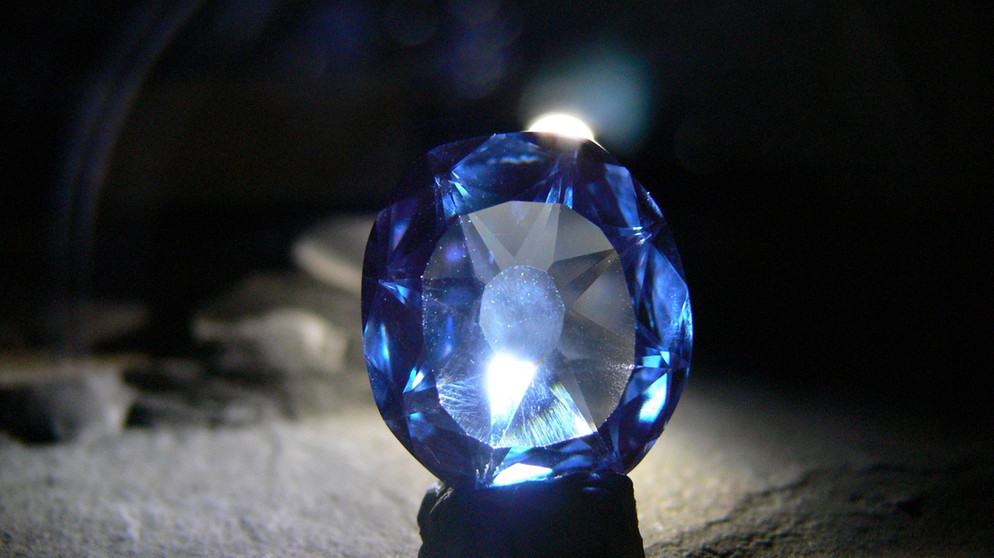
Originally from the Kollur Mine in India, the Wittelsbach-Graff Diamond weighs 31.06 carats and has internally perfect clarity. The first cut diamonds were discovered in Vienna at the outset of the seventeenth century. It belonged to the Habsburg family and was brought to Munich in 1722 as part of Maria Amalia’s dowry when she wed Karl Albrecht of Bavaria.
Maria Amalia made the Der Blue Wittelsbacher a part of her crown when she was crowned as the Empress. The diamond was listed as a blue brilliant in the House of Wittelsbach’s inventory. The Blue Wittelsbacher was released for Christie’s bidding in 1931 as a result of financial constraints made by the House of Wittelsbach.
However, the initial attempt failed; it wasn’t until 1951 that a buyer was obtained.
Did You Know?
Laurence Graff disclosed in 2010 that the diamond had undergone three diamond cuts to be blemish-free.
7. Artemis and The Stag
Country of Origin: Rome
Year Invented: 1st century BC to 1st century AD
Owner: Anonymous bidder
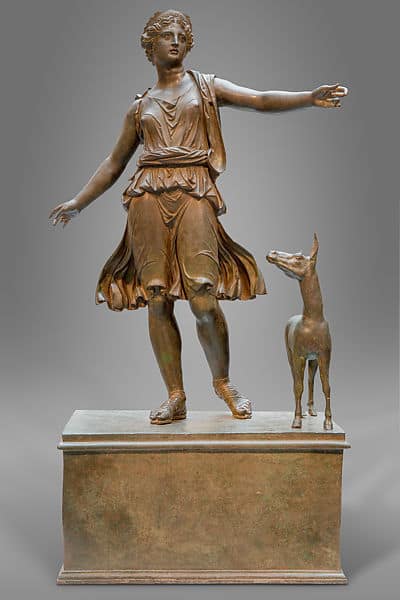
The bronze statue of the ancient Greek goddess Artemis known as Artemis and the Stag dates to the early Roman or Hellenistic period. The statue shows Artemis, a Greek goddess associated with various things along with wild animals and hunting.
As was typical of antiquity, the sculpture and its foundation were formed using the lost wax technique in several segments, and these pieces were subsequently bonded together using flow welds.
According to reports, the sculpture was discovered in Rome close to the Basilica of Saint John the Lateran. It is presumed that the statue once adorned the peristyle garden of one of the many great Roman villas or townhouses in the vicinity. The sculpture was initially lent to the Metropolitan Museum of Art in January 2008 for a period of six months, but as of October 2019, it is still on display there.
Did You Know?
The statue was auctioned off by the Albright-Knox Art Gallery in June 2007 and sold for $28.6 million, which was the highest price ever paid for a sculpture.
6. Leonardo da Vinci’s Codex Leicester
Country of Origin: Italy
Year Invented: 1510
Owner: Bill Gates
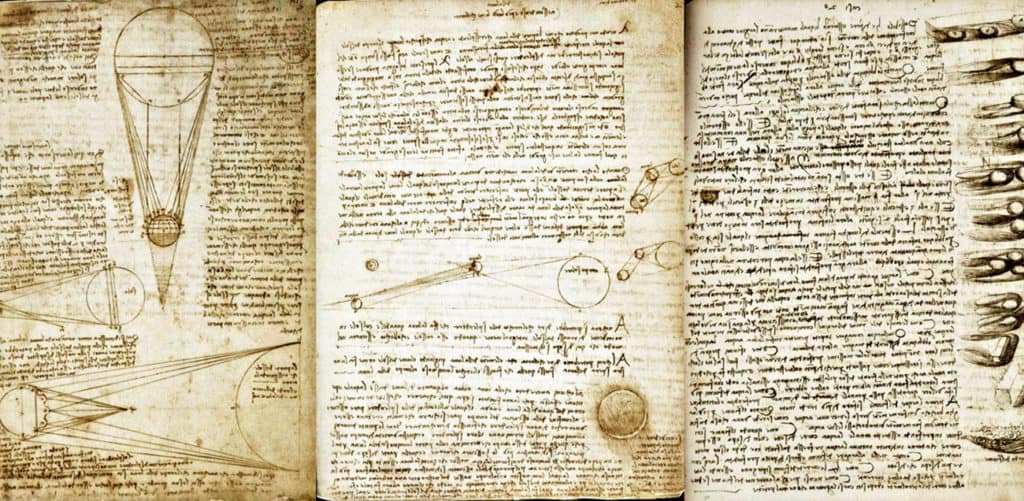
Leonardo da Vinci’s Codex Leicester is one of the various writings by Leonardo da Vinci that were created to serve as early sketches for later works that would be published.
It is a complicated and interesting contemplation on a subject that fascinated Leonardo for much of his career which is the water. The Codex Leicester was handwritten intensively on 18 sheets, with geometrical diagrams and drawings of experimental studies both imagined and actual.
Bill Gates spent $30.8 million at auction in 1994 to purchase it, and he rebranded it to Codex Leicester once again.
Did You Know?
It was originally given the name Leicester after the 1st Earl of Leicester who acquired it in 1717, but Armand Hammer, a rich billionaire, art collector, and philanthropist, had it renamed.
5. Persian Rug
Country of Origin: Iran
Year Invented: 17th century
Owner: Anonymous bidder
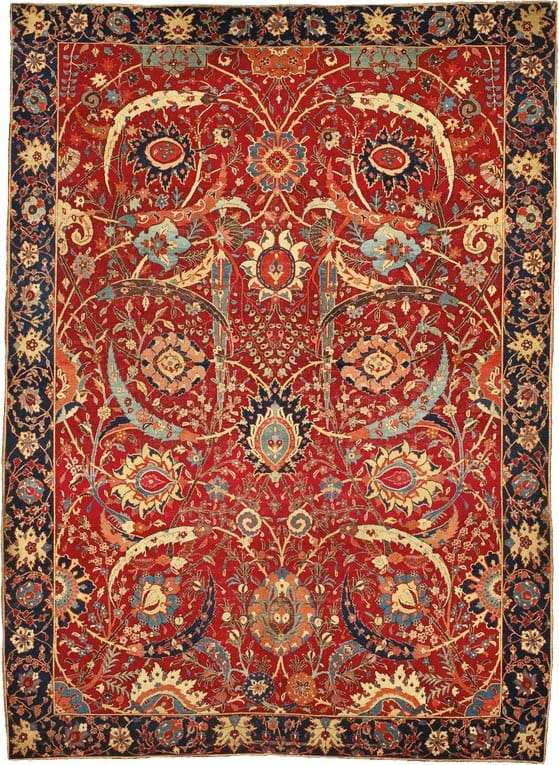
A Persian Rug from the 17th century was sold for $33.8 million, more than tripling the preceding carpet auction record. At Sotheby’s in New York, the highest bid for the Clark Sickle-Leaf Carpet was secretly submitted.
It is thought that the carpet, which dates to the first half of the seventeenth century, is from Kerman in southeast Iran. The Corcoran Gallery last featured it in 2008. The carpet, according to the auction house, was one of the most uncommon examples of the “vase” approach and seemed to be the only one of its kind with a red backdrop.
More than 360 years old, the magnificent handwoven carpet is 8 feet 9 inches by 6 feet 5 inches in size. Regardless of its old age, the rug is reported to be in great shape, which suggests it was hanging for a long time rather than placed on a floor.
Did You Know?
While touring Europe in the early 1900s, billionaire entrepreneur and politician William Clark acquired the Persian Rug from a merchant in Paris.
4. Badminton Cabinet
Country of Origin: Italy
Year Invented: 1726
Owner: Hans-Adam II
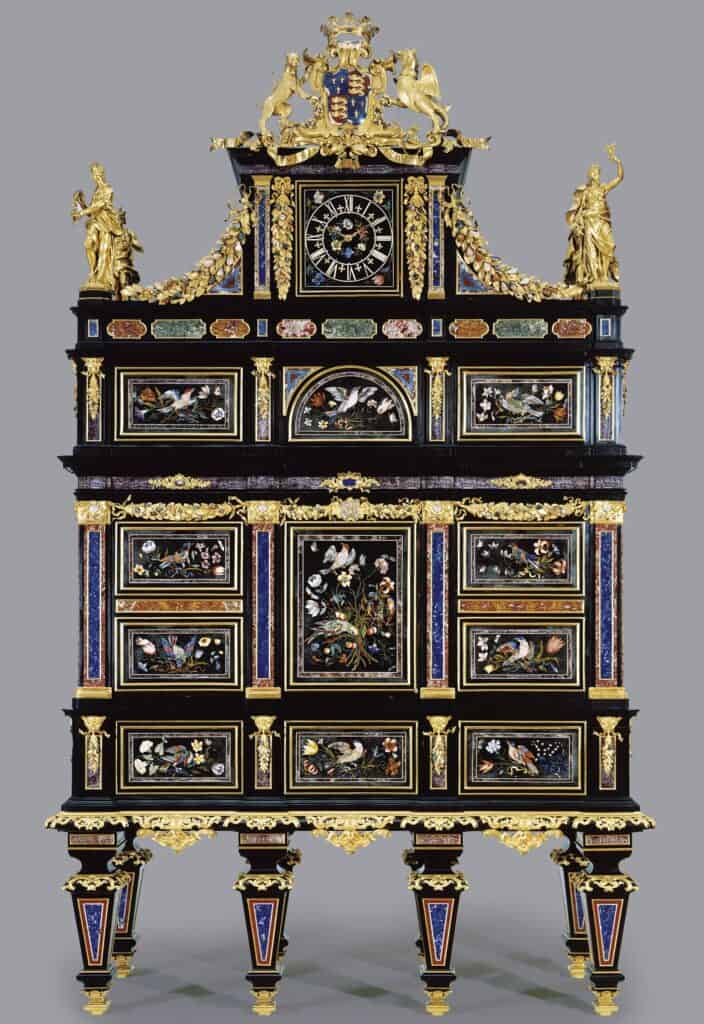
The Badminton Cabinet, a stunningly ornate piece of early 18th-century furniture that stands four meters tall, sold for $35.8 million on December 9 in London. It was acquired by Hans-Adam II, Prince of Liechtenstein, for the Vienna-based Liechtenstein Museum, where it was put on display to the public in the spring of 2019.
This significant piece of furniture from the 18th century twice surpassed the record for the costliest antique piece of furniture ever sold. Henry Somerset, the 3rd Duke of Beaufort, who was 19 years old at the time, ordered the Badminton Cabinet, also known as the Badminton Chest, in 1726.
This 14-foot-tall and 7-foot-wide Florentine chest, which is carved with hard and semiprecious stones, was never about the application. Like paintings and sculptures now, it was purchased during a time when expensive ornamental items denoted wealth and authority.
Did You Know?
The seat of the Dukes of Beaufort is Badminton in Gloucestershire, hence the name of the Badminton Cabinet.
3. Ru Guanyao Brush Washer Bowl
Country of Origin: China
Year Invented: 1279
Owner: Anonymous bidder
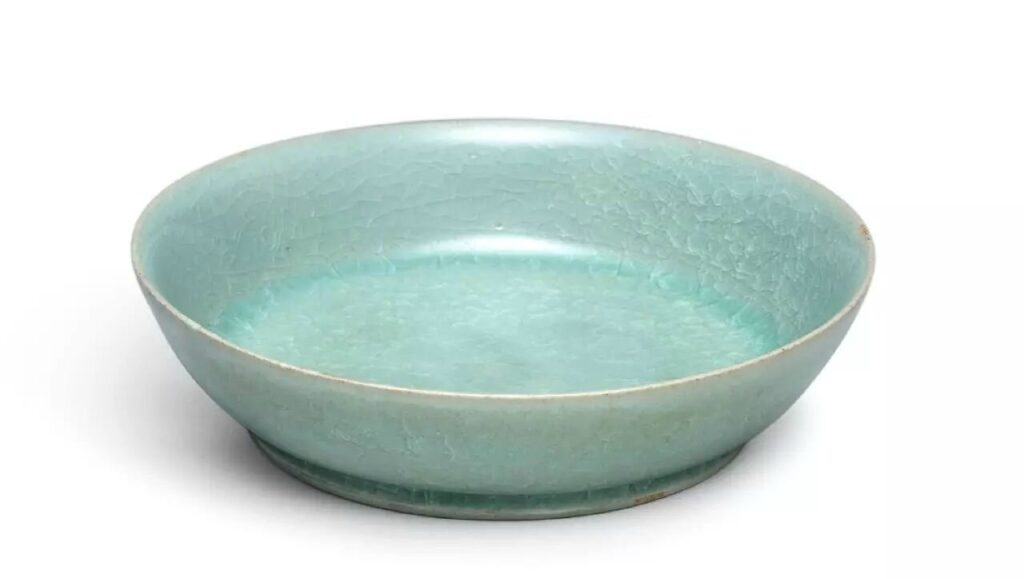
The Ru Guanyao Brush Washer Bowl originated in the Song Dynasty of China which dated from 960 to 1279. But somehow, it is still in excellent shape even after being thought to be 900 years old. The turquoise glaze is a classic example of Chinese elaborately decorated art.
In ancient China, brush washers were typically used to clean brushes for calligraphy or painting. The bowl is an exceptional piece of Ru guanyao, also known as Ru-ware, and has a diameter of five inches. It is distinguished by its vivid blue glaze and ice-crackle pattern. The glaze is covered over the rim and poured in multiple coats.
The incredibly rare and fragile vessel set a new world record for Chinese ceramics when it was eventually sold at $37.7 million, more than double its pre-sale estimate of $13 million.
Did You Know?
The Ru Guanyao Brush Washer Bowl is distinguished by its traditional aspect ratios and three depressions called “sesame seeds” which it benched on kiln supports.
2. Pinner Qing Dynasty Vase
Country of Origin: China
Year Invented: 1735
Owner: Bought by a Chinese bidder on behalf of an undisclosed buyer
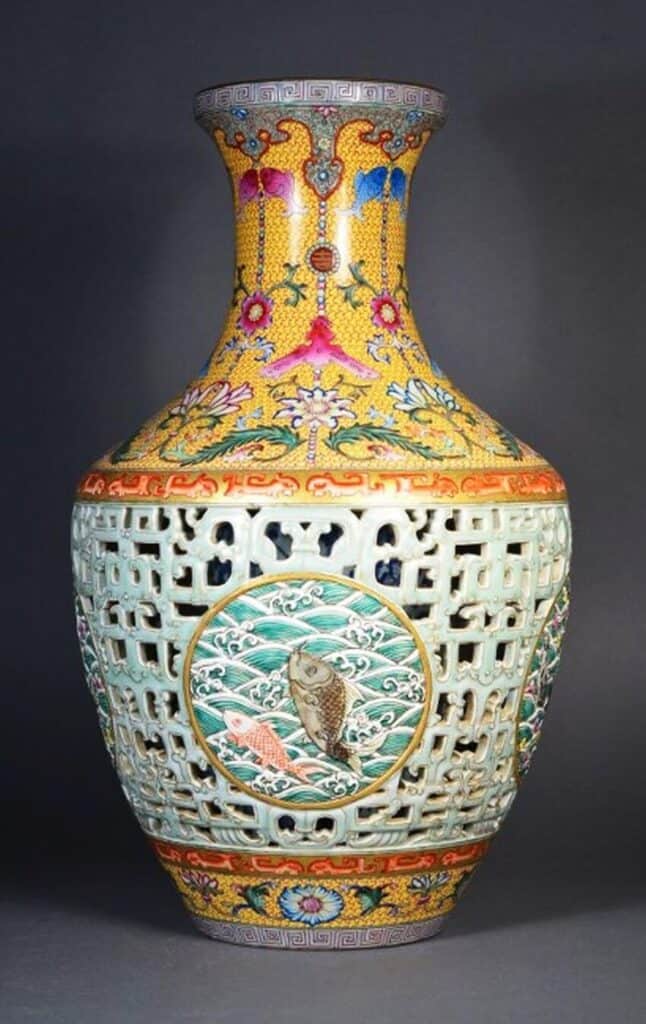
The golden vase, the Pinner Qing Dynasty vase, known for its aesthetic beauty and purity, has fish and floral designs. Many painters were able to achieve tranquility and wealth during the period between 1644 and 1911 when the Qing Dynasty replaced the Ming Dynasty, and they produced stunning works as a result. Furthermore, it is among the most valuable antiques ever to be sold at auction.
The world’s most expensive vase is evidence that Chinese porcelain started to become increasingly vibrant at that time. Also, the fact that the Chinese vase has an imperial stamp indicates that it was probably made for Emperor Qianlong in the late 18th century.
Did You Know?
The vase is believed to have left China about 1860 and was purchased by an English family in the 1930s, although it is unknown how it ended up in the home in Pinner.
1. The Hope Diamond
Country of Origin: India
Year Invented: 17th century
Owner: Smithsonian Institution
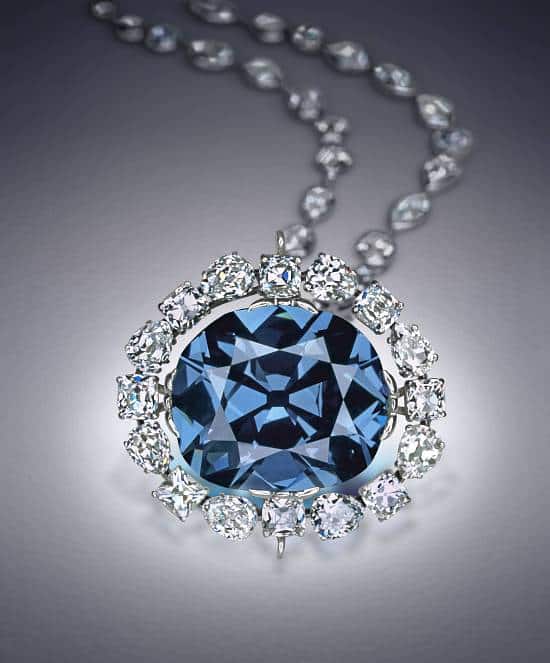
Originally taken from the Kollur Mine in the City of Guntur in India, the 45.52-carat Hope Diamond was discovered there in the 17th century and is considered the most expensive antique in the world which was sold for $350 million.
Because of minute levels of boron, it has a blue hue. A new understanding of how diamonds develop has been provided by their extraordinary size. As one of the Golconda diamonds, the gem is well-known. A 112 3/16-carat gem was acquired by the French businessman voyager Jean Baptiste Tavernier, and thus the origin of the stone that would later be called the Hope Diamond started.
The form and cutting of this diamond were triangular, Tavernier describes it as being a “beautiful violet” in hue. 16 white diamonds in the pendant’s pear and cushion shapes encircle the Hope Diamond. The McLean Diamond and the Star of the East were two additional gems that Mrs. McLean frequently hung on the pendant’s bail.
Did You Know?
The Hope Diamond’s striking steely blue hue was documented in the royal inventories, and the stone became known as the “French Blue” or the “Blue Diamond of the Crown.”
